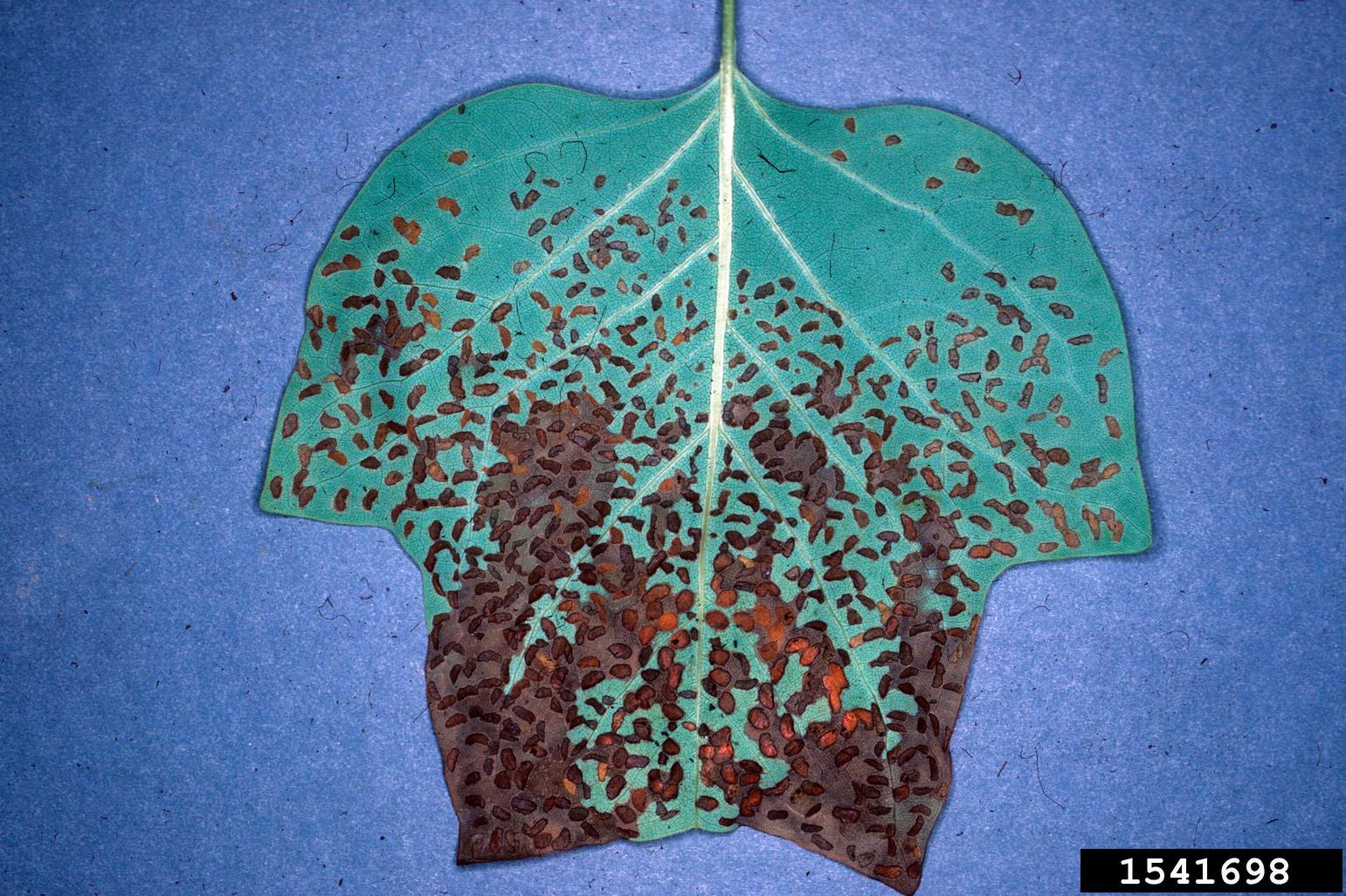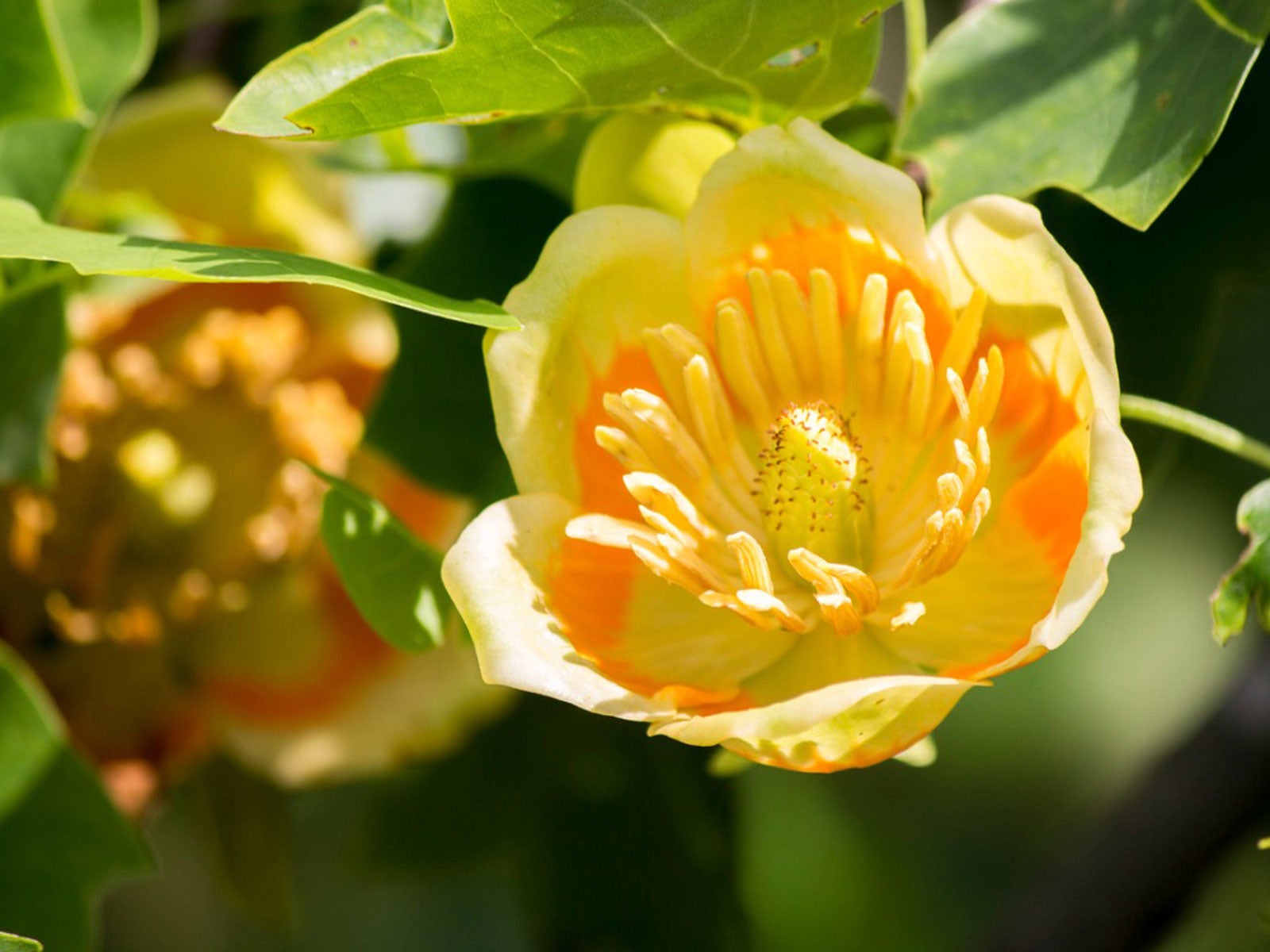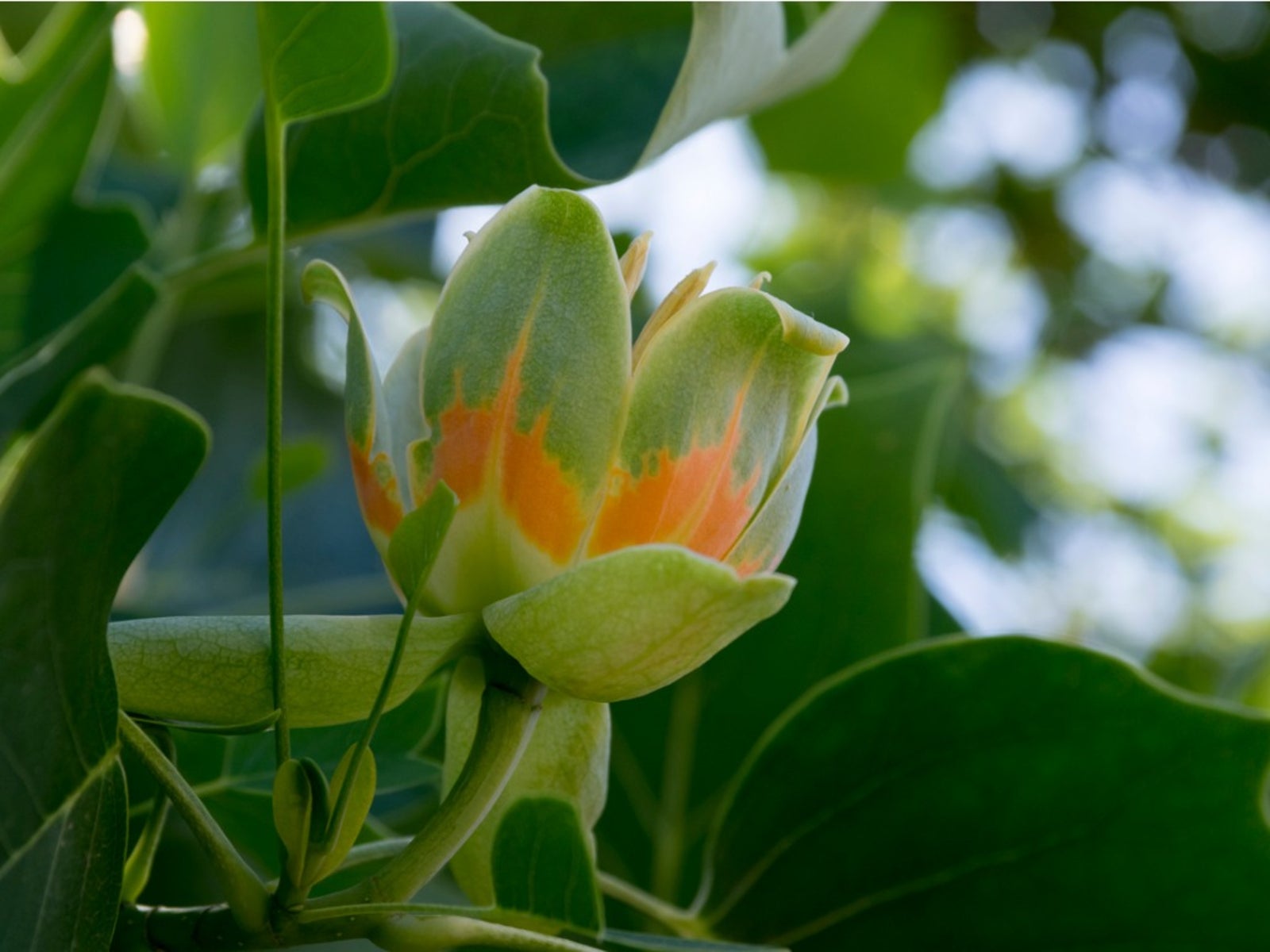Poplar Weevil Information: Tips For Managing Yellow Poplar Weevils


Yellow poplar trees, also known as tulip trees, are a popular ornamental in landscapes across the eastern United States. Reaching heights of up to 90 feet (28 m.) and a spread of 50 feet (15 m.), it's no wonder that homeowners love these showy trees. Unfortunately, yellow poplar weevils love them just as much and can be a real nuisance to yellow poplar lovers everywhere. Read on for some useful yellow poplar weevil information.
What are Poplar Weevils?
Poplar weevils are small, black-brown weevils that reach about 3/16 inch (5 mm.) long. Like other weevils, they have long snouts, but because of their small size, you may not notice that or the deep groove in their wing covers. Many people simply identify them as “flying fleas” due to their size and shape. Yellow poplar weevil damage is distinctive, often appearing as holes in leaves or buds the same size and shape as a curved grain of rice. Sadly, that's not where yellow poplar weevil damage ends. Their offspring are leaf miners that burrow into the leaf tissue and create blotch mines between the layers. On the outside of the leaf, this appears as a large brown spot that starts on a leaf margin. As these tiny pests feed, they grow and then pupate inside the mine. Adults emerge in June or July to start the cycle over again.
Managing Yellow Poplar Weevils
Unless your tulip tree is very young or your weevil problem severe, there's no reason to attempt yellow poplar weevil control. The damage they cause to established trees is strictly ornamental and successfully killing them requires a great deal of patience and precision. Since these weevils spend the majority of their lives inside the leaf tissue, you can't simply spray the surfaces in hopes that the poison will seep through. Successful yellow poplar weevil control comes down to timing. If you wait until about 10 percent of the branches of your tree show damage, you may be able to kill off the majority of the adults feeding on your tree with acephate, carbaryl, or chlorpyrifos. However, poison your weevils with caution, since you'll also kill the natural enemies that would have destroyed many of them without your intervention.
Gardening tips, videos, info and more delivered right to your inbox!
Sign up for the Gardening Know How newsletter today and receive a free copy of our e-book "How to Grow Delicious Tomatoes".

Kristi Waterworth was a regular contributor to Gardening Know How for many years, answering countless queries on plant pests and diseases.
-
 Creative Ideas For Plant Containers: 7 Ways To Save Money And Add Charm To A Garden
Creative Ideas For Plant Containers: 7 Ways To Save Money And Add Charm To A GardenIf you are looking for great ways to add personality to your container gardening – and even save yourself some money – then try these creative ideas for plant containers
By Mary Ellen Ellis
-
 How To Make A Bouquet Garni Or Herb Bundle For Cooking
How To Make A Bouquet Garni Or Herb Bundle For CookingIf you’re a great cook, you may have made an herb bundle before. If this is a new idea, learn how to add sparkle and interest to your dish with a bouquet garni.
By Amy Grant
-
 My Tulip Tree Isn’t Blooming – When Do Tulip Trees Flower
My Tulip Tree Isn’t Blooming – When Do Tulip Trees FlowerIf your tulip tree isn’t flowering, you probably have questions. What do you do when a tulip tree won’t flower? For answers, click here.
By Teo Spengler
-
 Propagation Of Tulip Trees – How To Propagate A Tulip Tree
Propagation Of Tulip Trees – How To Propagate A Tulip TreeIf you have one tulip tree on your property, you can propagate more. Propagation of tulip trees is either done with tulip tree cuttings or by growing tulip trees from seeds. Click this article for tips on tulip tree propagation.
By Teo Spengler
-
 About Tulip Trees: Tips On Growing And Caring For A Tulip Tree
About Tulip Trees: Tips On Growing And Caring For A Tulip TreeTulip trees have spectacular spring blooms that resemble the bulb?s flowers. The tulip poplar tree is not a poplar tree and not related to tulip flowers but is easy to grow and care for. Click here for more.
By Bonnie L. Grant